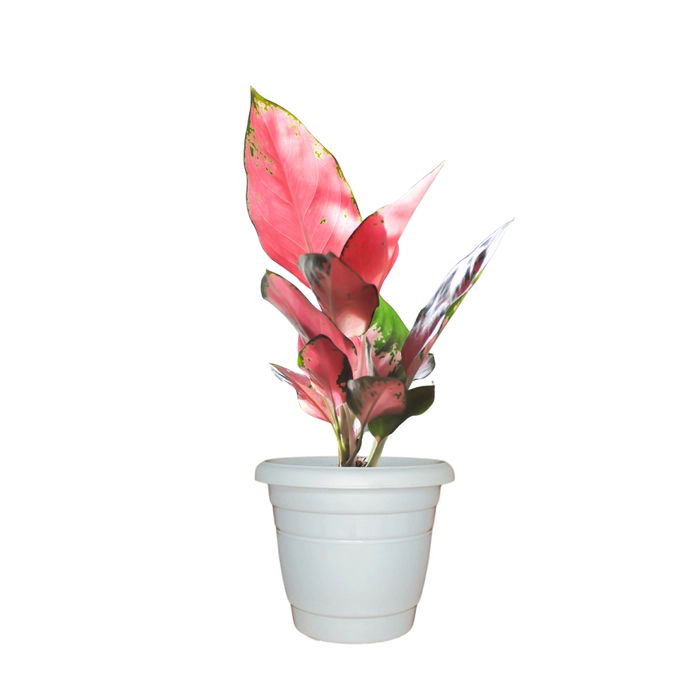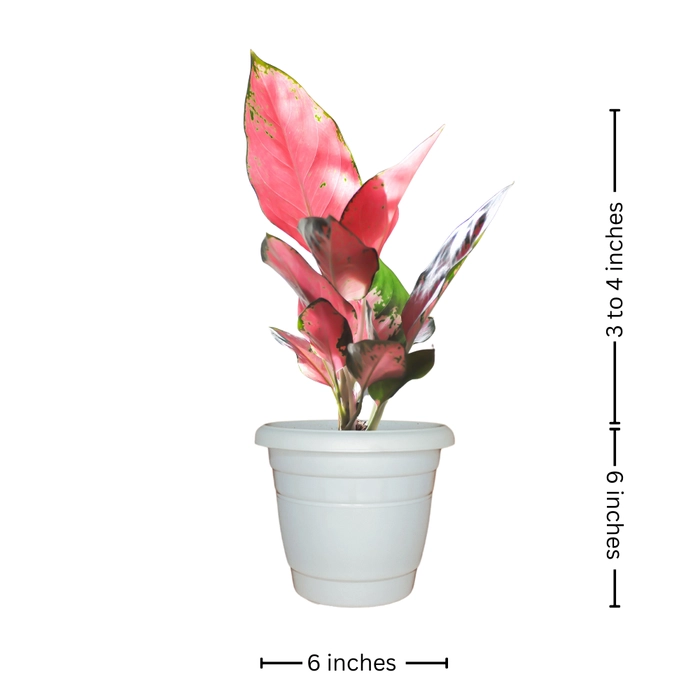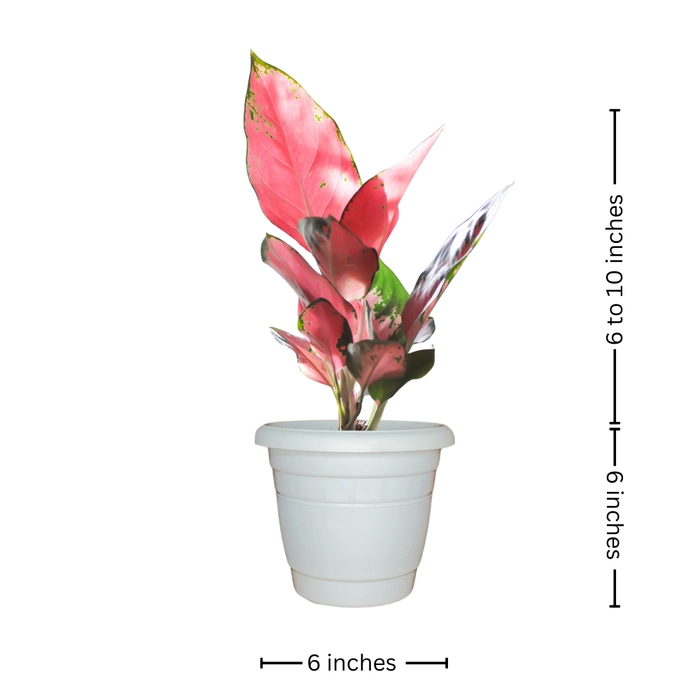Aglaonema Pink Plant
Description
- The Aglaonema Pink, also known as the Chinese Evergreen, is a stunning and popular tropical houseplant prized for its vibrant pink and green foliage. This plant species has become a favorite among indoor gardeners for its striking appearance and ease of care.
Features & Benefits
- Known for its air-purifying qualities, removing toxins like formaldehyde and benzene from indoor air, promoting a healthier indoor environment.
- Benefits from occasional misting to increase humidity levels, particularly in dry indoor conditions.
- Adds a touch of elegance and beauty to home or office spaces, enhancing interior decor.
- Features striking pink and green foliage, with varying shades and patterns depending on the cultivar.
- Leaves are typically broad and glossy, adding a vibrant pop of color to indoor spaces.
Care Guide
- Light: Aglaonema Pink plants thrive in low to moderate indirect light. Place them near a window where they can receive filtered sunlight or in well-lit areas away from direct sun exposure, as too much sunlight can scorch the leaves.
- Watering: Keep the soil evenly moist but not waterlogged. Water the Aglaonema Pink thoroughly when the top inch of soil feels dry to the touch. Ensure that excess water drains away to prevent waterlogging, which can lead to root rot.
- Soil: Plant Aglaonema Pink in well-draining potting mix, such as a blend of peat moss, perlite, and compost. Ensure the pot has drainage holes to allow excess water to escape.
- Humidity: Aglaonema Pink plants thrive in moderate to high humidity environments. Increase humidity levels by misting the leaves regularly or placing a humidifier nearby, especially during the dry winter months.
- Fertilization: Feed Aglaonema Pink with a balanced liquid fertilizer diluted to half strength every 4-6 weeks during the growing season (spring and summer). Reduce fertilization frequency or stop altogether during the dormant winter months.
- Pruning: Remove any dead, damaged, or yellowing leaves as needed to maintain the plant's appearance and health. Use clean, sharp pruning shears to make clean cuts, and avoid cutting into healthy tissue.








